The Father of Classical Guitar
To refer to Francisco Tárrega as the father of the classical guitar is by no means hyperbole. All of us who delight in playing and listening to this exquisite instrument owe him a substantial debt. He was born in Villarreal, just north of Valencia on November 21 1852. His father played guitar and while he was away at work, young Francisco did his best to learn the instrument.
At age 10 he was heard by the guitarist Julián Arcas who suggested to the child’s father that he come to Barcelona for further study. Lessons with Arcas went well, but when his teacher was obliged to go on tour, the young Francisco ran away from home and began his musical career playing in Barcelona’s bars and coffee houses. Despite being found and retrieved by his father, he ran away to Valencia and joined a band of gypsies! For the next 12 years Tárrega would hone his skills as a guitarist, becoming one of the instrument’s most accomplished players.
At age 17 he journeyed to Seville to try and purchase an instrument from one of Spain’s premier luthiers Antonio de Torres Jurado. Torres was initially prepared to sell Tárrega a student instrument, but after hearing him play he was impressed enough to sell him a much finer guitar he had made for his own use. Armed with an excellent instrument, Francisco Tárrega entered the Madrid Conservatory in 1874 at age 22. There he honed his craft and learned composition from the famous Zarzuela composer the aptly named Emilio Arrieta. After graduating from the conservatory, Tárrega continued his concert career and eventually became a respected pedagogue. Singlehandedly he taught the next generation of important guitarists which included, Miguel Llobet, Emili Pujol, and Daniel Fortea.
As a composer Tárrega’s output consists of some 78 original works for solo guitar and 120 transcriptions of works by other composers. Like fellow Romantic composer Robert Schumann he was an exquisite miniaturist. While some of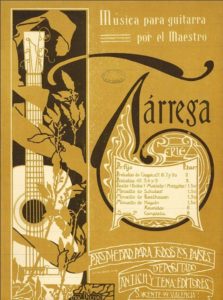 his pieces require substantial technical requirements (Tárrega was called the Sarasate of the guitar) works like Adelita or Lágrima are just beautiful examples of exquisite melody and harmony which most guitarist, myself included, learned decades ago and still enjoy playing.
his pieces require substantial technical requirements (Tárrega was called the Sarasate of the guitar) works like Adelita or Lágrima are just beautiful examples of exquisite melody and harmony which most guitarist, myself included, learned decades ago and still enjoy playing.
Tárrega’s most famous work, Recuerdos de la Alhambra (Memories of the Alhambra) was written in 1896 as a result of a trip to Granada provided by a wealthy patron named Conxa Martinez. The piece combines a melody using a tremolo created by the fingers with arpeggiated chordal harmonies 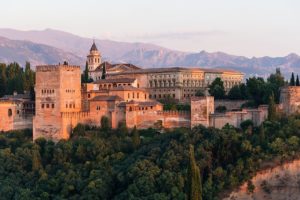 played by the thumb. If played well and the tremolo is even (which in my case it sometimes is) it should give the listener the impression that there are two guitars playing! Needless to say the Alhambra itself is the stuff of legends and to a northerner like Tárrega it must have seemed especially exotic. The fortress was begun in 889 on the site of Roman ruins and then renovated by Nasrid emir Mohammed ben Al-Ahmar of the Emirate of Granada around 1250. It was re-purposed as a royal palace about a century later in 1333 by Yusuf I the Sultan of Granada. At the end of the re-conquest of Spain by Christians in 1492 it became the site of the royal court of Ferdinand and Isabella. It was in this very same palace, the Alhambra, that Christopher Columbus (a man who very possibly could have been a Jew) was granted the charter for his expedition to America! The Alhambra represents one of the final and most beautiful examples of Moorish architecture and culture in Spain and in its craftsmanship one can find beautiful examples of Islamic, Jewish and Christian design.
played by the thumb. If played well and the tremolo is even (which in my case it sometimes is) it should give the listener the impression that there are two guitars playing! Needless to say the Alhambra itself is the stuff of legends and to a northerner like Tárrega it must have seemed especially exotic. The fortress was begun in 889 on the site of Roman ruins and then renovated by Nasrid emir Mohammed ben Al-Ahmar of the Emirate of Granada around 1250. It was re-purposed as a royal palace about a century later in 1333 by Yusuf I the Sultan of Granada. At the end of the re-conquest of Spain by Christians in 1492 it became the site of the royal court of Ferdinand and Isabella. It was in this very same palace, the Alhambra, that Christopher Columbus (a man who very possibly could have been a Jew) was granted the charter for his expedition to America! The Alhambra represents one of the final and most beautiful examples of Moorish architecture and culture in Spain and in its craftsmanship one can find beautiful examples of Islamic, Jewish and Christian design.
Here are two great versions of Recuerdos de la Alhambra!

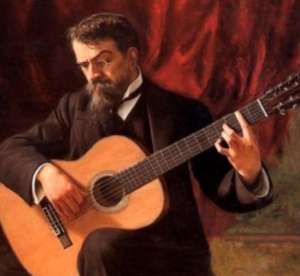
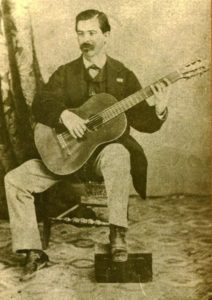
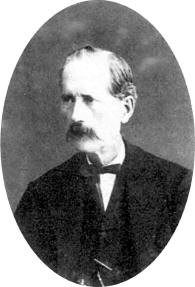
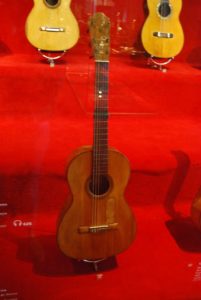
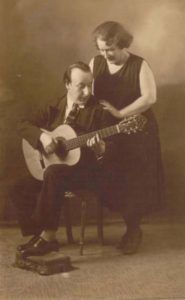
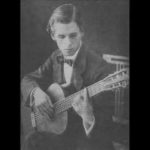
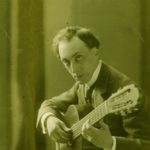
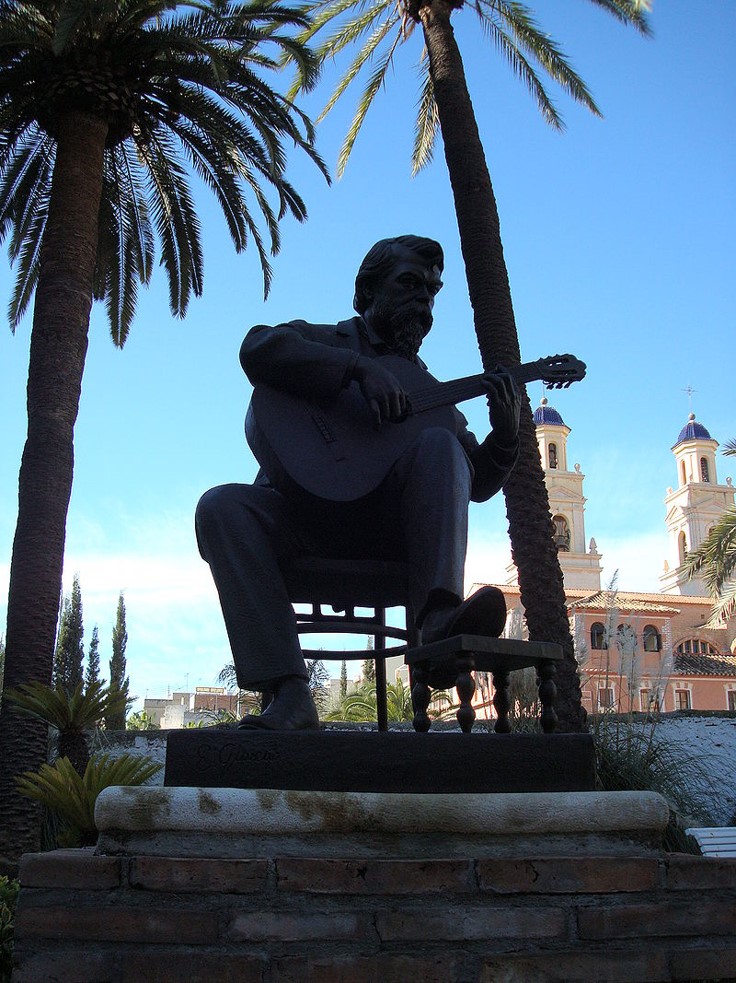





3 Responses to The Father of Classical Guitar